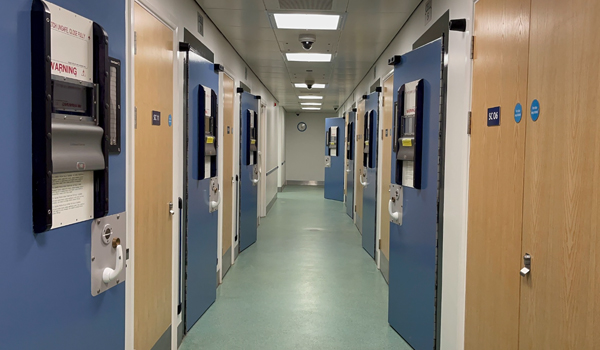Essex Police has clear governance arrangements for custody services, but some areas of concern, says inspectorate
Essex Police has clear governance arrangements for the safe and respectful provision of custody services, although there are some areas of concern, says the police inspectorate.
In particular, while the recording of use of force incidents is “generally good” and has improved since a previous inspection, these incidents are not being managed well enough, said HM Inspectorate of Constabulary and Fire and Rescue Services (HMICFRS).
“We [also] have concerns about the amount of time some detainees spend in restraints, the use of some control techniques, and instances where detainees’ own clothing had been forcibly removed for safety reasons and replacement clothing provided,” said HMICFRS.
“The performance of these services is managed through strategic and operational meetings led by senior officers. The force has made some good progress in improving its custody services since our last inspection, but some of our concerns haven’t been dealt with well enough.”
The inspection was carried out by HMICFRS and the Care Quality Commission (CQC) in May and June this year.
The force has seven custody suites. These are located at Basildon, Grays, Harlow, Southend, Chelmsford, Colchester and Clacton.
Inspectors found the suites are generally clean and well maintained, although they all appear dated apart from Southend. Essex Police owns the buildings that house these suites, which means that it is responsible for their maintenance.
The force’s custody services are provided by full-time personnel.
“In our view, the resourcing model doesn’t provide enough personnel to meet the level of demand,” said HMICFRS. “The force relies heavily on sergeants from local frontline policing teams to cover the work of custody officers. This can affect the consistency of standards.
“For example, during busy periods there aren’t always enough custody personnel to manage the number of detainees waiting to be booked in, or to meet detainees’ needs such as providing showers or exercise.”
Initial training for custody personnel is comprehensive and follows the College of Policing’s nationally accredited course, said the inspectorate.
“The force allocates two days for continuing professional development, and personnel we spoke to were generally positive about the training they received,” it said.
Essex Police has adopted the College of Policing’s authorised professional practice, but not all personnel follow it, particularly when managing risk, inspectors found.
While the force generally follows the Police and Criminal Evidence Act 1984 (PACE) and its codes of practice, some aspects of its detention reviews, as set out in section 40 of the Act, “don’t meet the requirements of the PACE codes of practice”, said HMICFRS.
Essex Police was found to have a good approach to managing adverse incidents, and shares learning with personnel through messaging and training.
The force collects a range of performance metrics and uses these to monitor and scrutinise custody performance. It also uses dip-sampling processes to assess how well it is managing custody performance.
“However, some of its metrics are focused on confirming that a particular process has been carried out but don’t establish how well it has been done,” said HMICFRS. “And these processes didn’t identify some of the issues we have found in our inspection.”
“In general, the quality of recording on custody records isn’t always good enough. We saw some detailed entries, but in many instances a reliance on standard templates led to contradictory and confusing entries.”
However, it added: “The force understands its responsibilities under the public sector equality duty. It monitors some important custody information for disproportionality, such as strip searches, use of force and what happens to the detainee after they leave custody (such as being charged, bailed or released).”
Volunteers from the Independent Custody Visiting Association carry out weekly visits to each suite. They told inspectors they “have a good relationship with the force, and the force responds well to any issues they raise”.
In the months leading up to the inspection, the force established an independent advisory group for custody to provide additional scrutiny.
HMICFRS found the force and its partners were “strongly committed to keeping children out of custody”.
“But when children are charged and detained overnight in custody, they aren’t usually moved to more appropriate local authority accommodation,” it added.
While the force works with mental health services to support people with mental health conditions, inspectors found detainees can spend too long in custody while they wait for a mental health assessment.
“This is a poor outcome for these detainees,” said HMICFRS.
However, it added: “At the time of our inspection, the force was developing a joint escalation process with its healthcare partners to reduce the delays in arranging mental health assessments in custody and improve the outcomes for detainees.”
HMICFRS has recommended that “with immediate effect”, Essex Police should improve its management of use of force incidents in custody.
It should make sure that custody officers supervise incidents closely, including the ongoing use of equipment such as handcuffs, spit hoods and leg restraints. And it should scrutinise incidents afterwards to assess the necessity and justification of any use of force.


